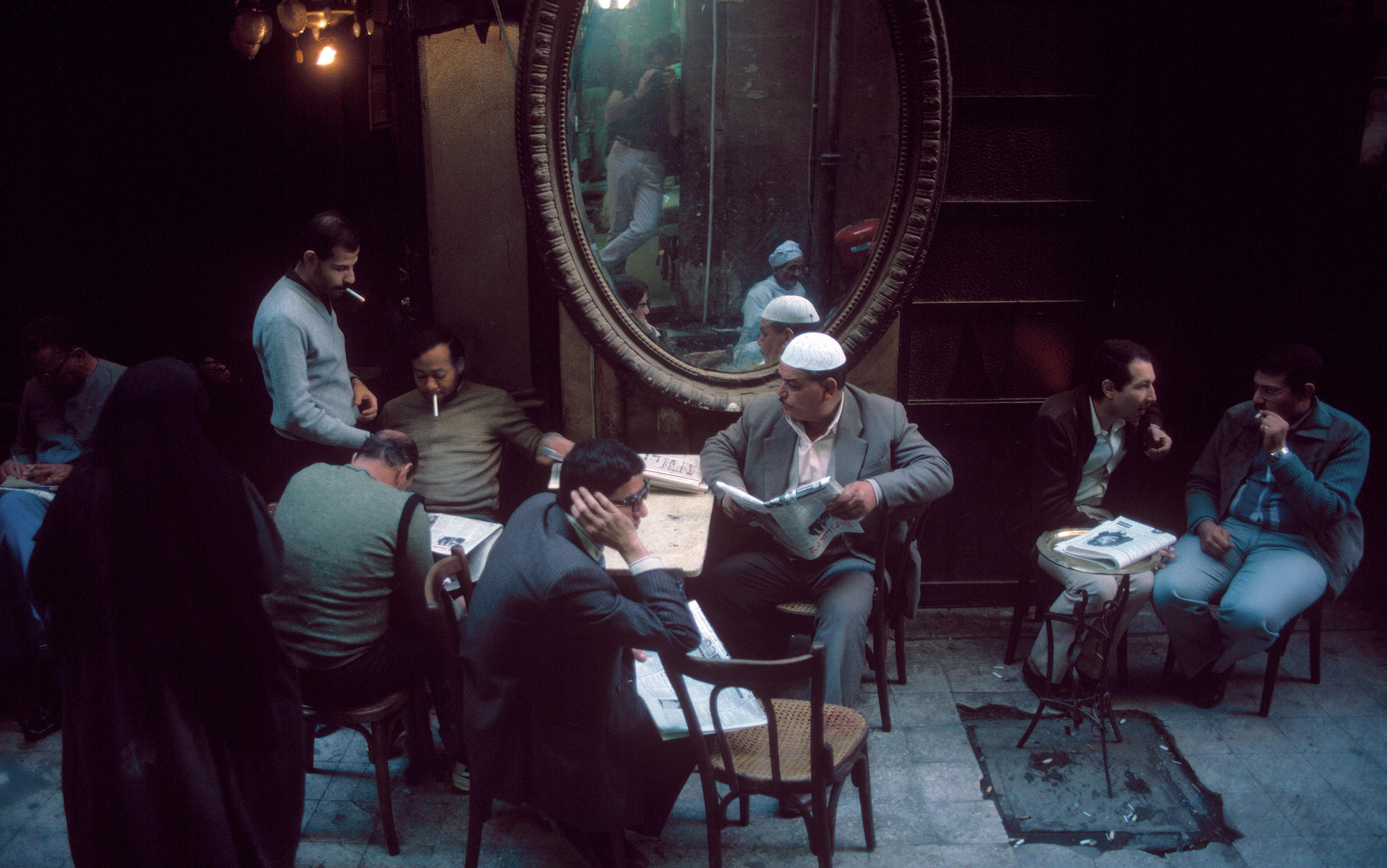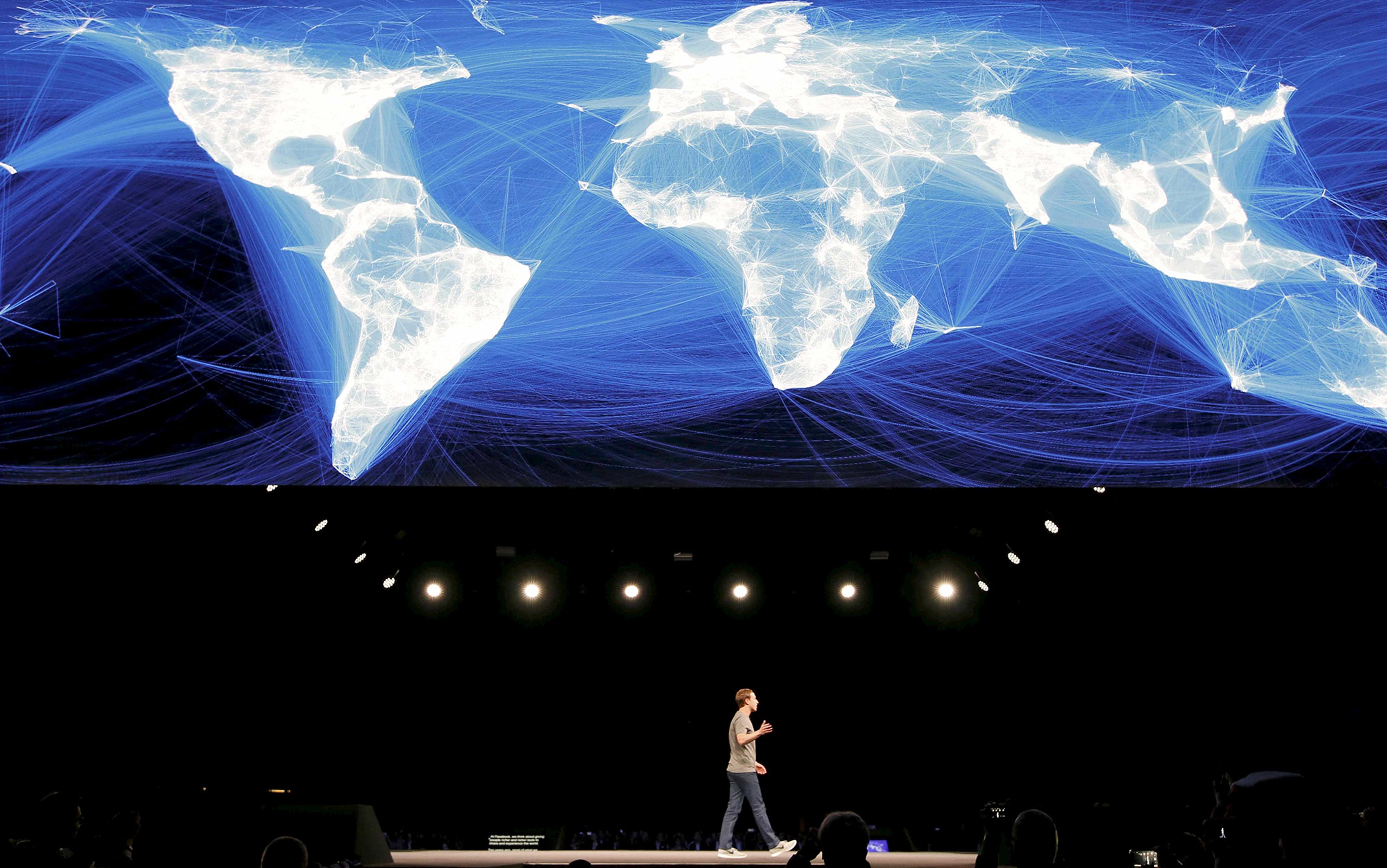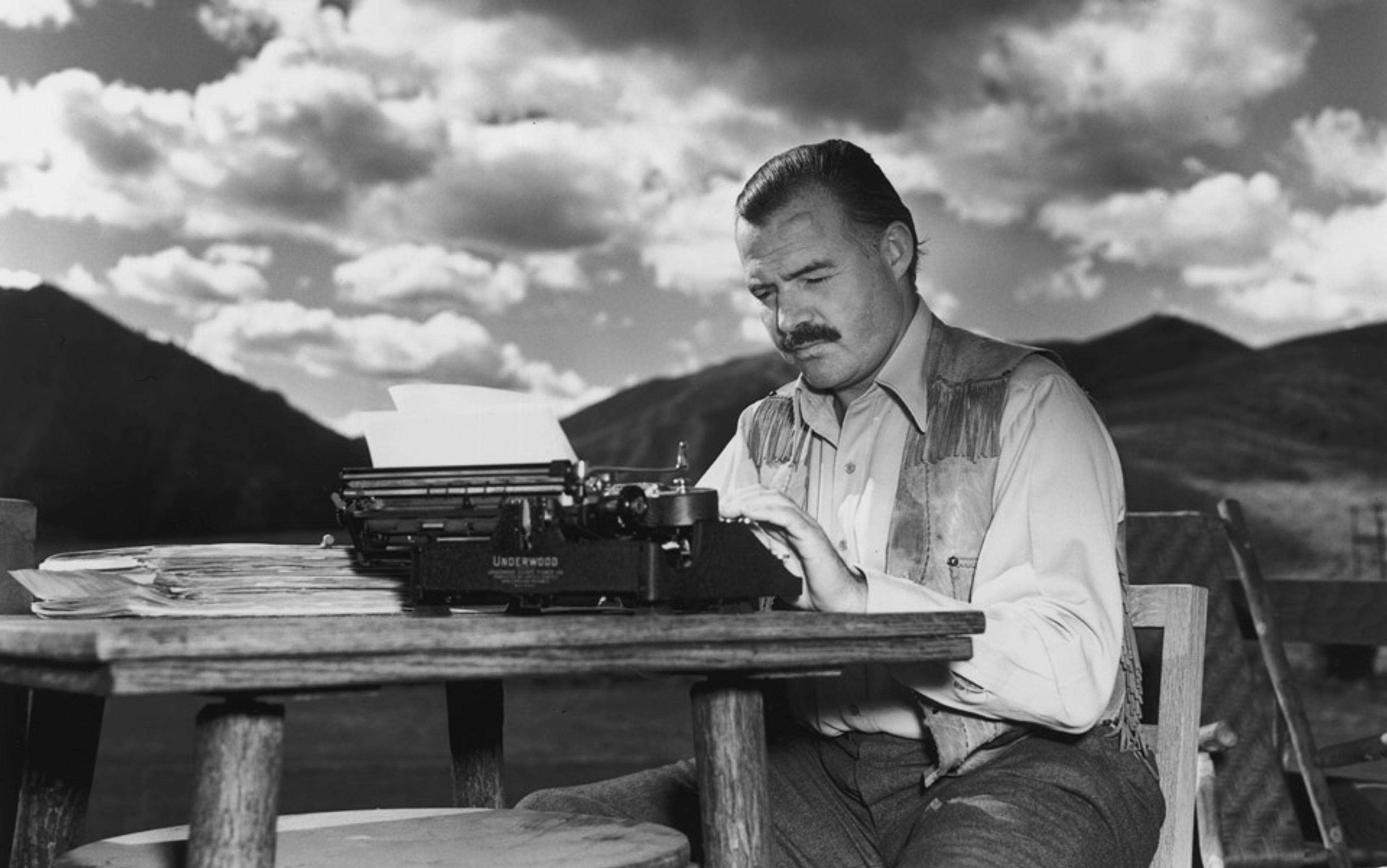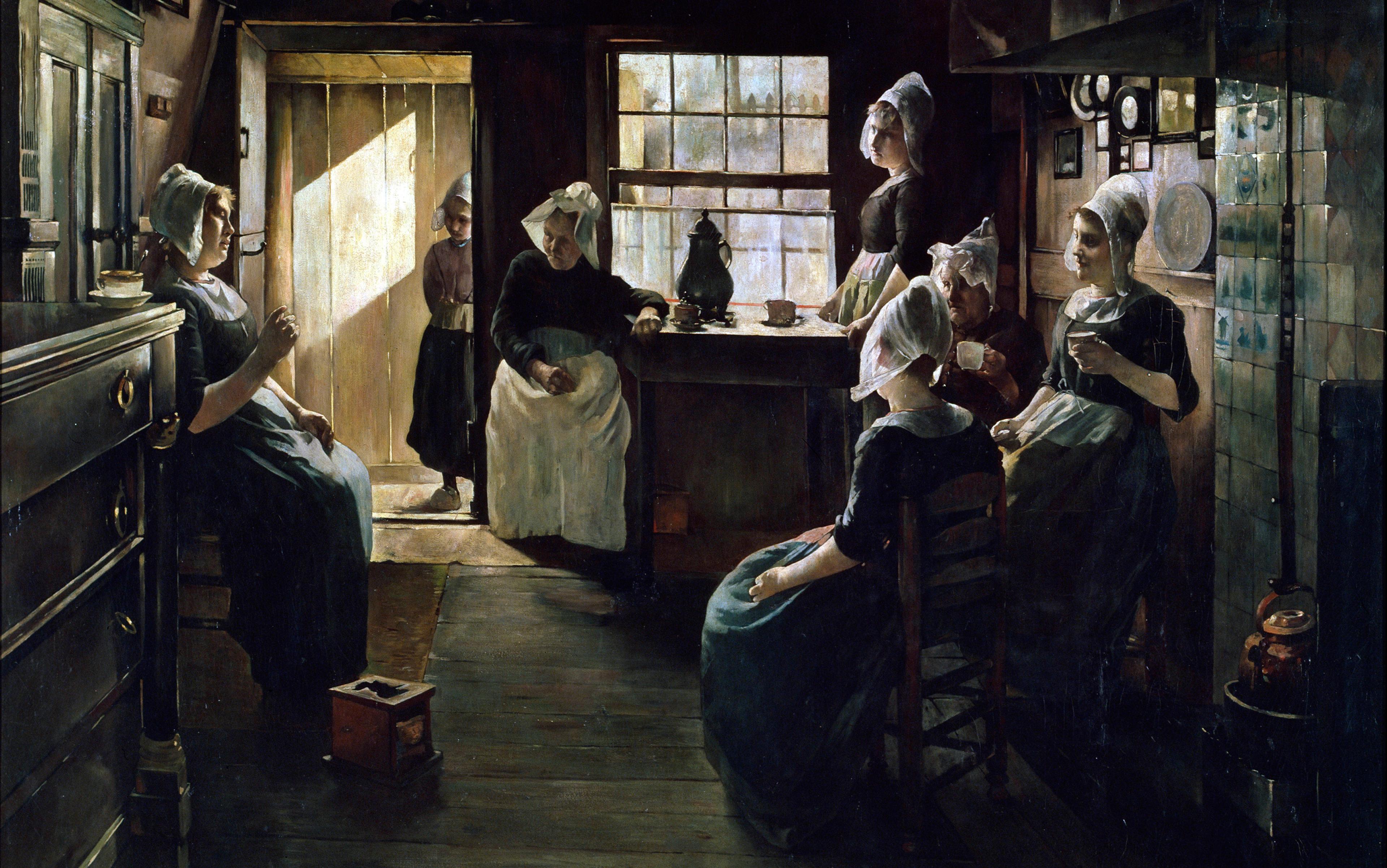In a newsroom at 30 Rockefeller Plaza, on a June day in 2000, a woman handed me a video tape. ‘Log this,’ she said. Logging tape was a mundane task that made most interns groan, but I regarded it as glamorous. It meant slogging through hours of raw video footage to create a ‘shot list’ of metadata, a time-coded transcription of contents for video-editing purposes. Boring? For some. But just a couple years prior I’d been slopping hogs on my family farm in southern Kansas. Sure I’d log that tape.
Analogue film remained pervasive in newsrooms and beyond, but technologies were doing what they do – changing. Some of the boxy televisions flashing from newsroom walls had been replaced with flat slabs involving ‘plasma’. At a rooftop party in Brooklyn, the Twin Towers sparkled behind us while a Dateline producer showed me her new MP3 player – smaller than her hand and capable of carrying, miraculously, 20 songs plucked from the internet. Being of a particular class, I didn’t have a cell phone or cash for long-distance calls; my first email account was just a couple of years old, and I marvelled at sending immediate, digital love letters from Manhattan to my boyfriend in the midwest while yearning to hear his voice.
Just shy of my 20th birthday, I’d long intended to be a journalist but wasn’t sure what sort. Back at my venerable journalism school in Kansas, I was a member of the last class of budding reporters receiving a traditional, hard-ass print training before a historic, technology-driven curriculum overhaul took hold. My peers and I would soon get to choose: stay on the reporting-intensive track or shift to the new one tailored to ‘media convergence’ – diversifying know-how across disparate realms of print, TV and radio suddenly united by the web. Excited about the internet but sensing something more abiding in story than in the container that transmits it, I’d stay on the ‘old curriculum’.
But that summer I was exploring broadcasting with an internship won via clunky, cordless telephone in my college-town apartment at the end of my sophomore year. I’d called NBC’s New York affiliate and convinced an Emmy-winning investigative reporter-producer duo to put me in its speeding, honking New York City news van. Some days were more newsroom-bound. Following orders, I sat down at a machine and popped in the assigned tape.
The footage showed the recent Puerto Rican Day Parade, which attracts three million sweaty people each summer in New York City. The anonymous camera-holder had followed a pack of men strutting about the dense crowd stripping and assaulting dozens of women.
It was a big story, and I held one of the few video copies that would show it to the world. Staring at a TV screen, I stopped and started, stopped and started the tape, creating a second-by-second blueprint for producers who would cut it in the editing bay. What the nation would glimpse that evening as a pared-down, summarised, three-minute package, I watched alone in slow-motion entirety, without censorship. A bright tank top, torn. A brunette woman, raped by fingers of one hand after another. A young man’s sweaty upper lip, turned down at the corners. Stretches of quiet when women seemed to accept that no one would help (nor could help, as when a husband struggled to reach his wife).
That’s what broke my tough reporter’s heart – not the horror of sexual assault but that I was clocking it, timing it, reducing it to bullet points for processing
I felt dizzy, physically weakened. The empathy that journalism school taught me to board up tore loose. My body felt a story and responded with what that story required: tears.
The evening news coverage I helped to create wouldn’t be the excruciating close-up I’d watched. It would, instead, be a network race to precise data about what headlines called a ‘wilding’. How many perpetrators? How many victims? Unacknowledged, uneasy thrills shot about the newsroom as numbers ticked upward: 22, 37, more than 50 women. I ran a designer’s rendering of the parade route, labelled with locations and times of the attacks, from one end of the newsroom to the other. What I’d seen as graphic documentation, the nation would see as a graphic.
That’s the thing that broke my tough reporter’s heart that digital-dawn day with the tape at 30 Rock – not the horror of sexual assault but my awareness of what I was doing with it: clocking it, timing it, reducing it to bullet points for processing – the way fast-food corporations processed the calves I once bottle-fed in my family’s farmhouse living room on winter mornings too cold for newborns to survive.
It’s what my old-school journalism professors lauded as hard news – an apt term for a system that ‘shoots’ video, ‘breaks’ the story, ‘cuts’ to the next shot. It emphasises political races over candidates’ platforms, and explosive wars over the reasons behind them. Didactic and linear, its best product is fast, lean fact. Perhaps indicating a telling defensiveness of the shortcomings of this approach, in J-school my peers and I learned never to call 10 inches of lede, nutgraph and body an ‘article’ – true journos, we were told, call them ‘stories’.
In the 15 years since my internship at 30 Rock, technology has facilitated a constant feed of these so‑called stories. Today you have probably encountered more news of the world outside your immediate experience than most humans did in an entire lifetime. Did you feel much? Probably not. Information without context strikes the mind but peters out before the heart. When you did feel something from the news, it likely was because your empathy sniffed out some humanity – you saw your child in a bullet-torn body in Ferguson, Missouri, or your prejudice in the man who pulled the trigger – rather than because the news report itself was humane.
The embarrassing inadequacy of our daily-news structures never was more apparent than when reporters raced to interview traumatised children hours after the shooting at Sandy Hook Elementary School in Newtown, Connecticut, in late 2012. Social media went aflame with outrage on the children’s behalf, and journalists themselves expressed qualms; the CNN anchor Anderson Cooper and others chose not to join their colleagues in putting mics in young victims’ faces. The broadcast journalist Lauren Ashburn wrote for The Daily Beast website: ‘In my television reporting days, I was as dispassionate as the next news gal… But in the wake of what happened in Newtown, it’s now clear that too much restraint fails to match the moment when kids are being killed.’
We should be suspicious of a news paradigm whose integrity diminishes as story size increases. Like most, I appreciate the ability to skim headlines, to drink in complicated events that have been watered down. We’re busy people, and some news requires haste. But let’s be clear: no matter what my journalism professors said, most news stories aren’t stories.
Like hungry children we walked into an information buffet, making many poor choices as we filled our trays
I recall my grandfather’s response one morning in the ’90s, when Grandma explained that the toast he was chewing had been spread with ‘I Can’t Believe It’s Not Butter’: ‘I sure as hell can.’ Sensing a similar hollowness in the concrete canyons of midtown Manhattan, I realigned my career path toward creating reports that, even if lean on words, might be rich with nuance.
In my first reporting jobs, whether immersing myself in a pack of skinheads or listening to a police scanner at 2am, I seized any chance to write human-interest stories – features that describe problems and triumphs through descriptive anecdotes of individuals rather than statistic-heavy summaries of issues. The divide between the two methods is discernible on my diplomas: I’m a bachelor of science in journalism and a bachelor of art in English. To bridge that divide academically, I pursued a master of fine art in non‑fiction writing, studying the space where storytelling might be at once factual in content and artistic in form.
Along the way, information went online. Wow, the pre-millennials among us thought in the early days of the web, our microfiche searches humbled – anything we want is at our fingertips! Possibilities once limited by folded paper and airtime, once corralled by editors and producers, suddenly stretched farther than we could see. Like hungry children we walked into an information buffet, making many poor choices as we filled our trays. Now settled into the 21st century, our mobile devices pumping an endless feed into our beings, it’s time to take a deep breath and ask: what do we want?
Page-views suggest we crave short, informative text, ‘clickbaited’ with images of half-naked or bleeding bodies – even faster variations on the TV soundbites I once helped locate on tape. The marketplace has something to tell us. But to say that the 24/7, quick-and-dirty news cycle exists because people want it is incomplete logic. Poor people in a blighted urban food desert – devoid of garden or grocer but rife with Burger Kings and Dairy Queens – don’t consume fast food every day because their bodies are hungry for French fries. They consume it because they’re hungry for food. Its lack of nutrient density often means they have to keep eating – creating a confusing 21st century conundrum for the evolved human body: to be at once obese and malnourished.
In a media landscape of zip-fast reports as stripped of context as a potato might be stripped of fibre, most news stories fail to satiate. We don’t consume news all day because we’re hungry for information – we consume it because we’re hungry for connection. That’s the confusing conundrum for the 21st century heart and mind: to be at once over-informed and grasping for understanding.
I’ve begun college writing classes by asking students to name the first image that comes to mind at the term ‘atomic bomb’. Nearly every answer, every time, is ‘mushroom cloud’. They’ve seen that black-and-white photograph in high-school textbooks alongside brief paragraphs about mass death. But they can’t remember much about it. Who dropped the nuclear weapon? What year? In what country and for what reason? They memorised it all once, but it wasn’t relevant enough to their lives to stick.
Then the students read an excerpt from Hiroshima Diary (1955), the personal account of the Japanese physician Michihiko Hachiya, who in 1945 was enjoying his quiet garden when he saw a flash of light and found himself naked.
‘A large splinter was protruding from a mangled wound in my thigh, and something warm trickled into my mouth,’ Hachiya wrote. ‘My cheek was torn, I discovered as I felt it gingerly, with the lower lip laid wide open. Embedded in my neck was a sizable fragment of glass which I matter-of-factly dislodged, and with the detachment of one stunned and shocked I studied it and my blood-stained hand. Where was my wife?’
As he runs to help himself and others, Hachiya sees people moving ‘like scarecrows, their arms held out from their bodies’ to avoid the pain of burnt flesh touching burnt flesh. His attention to fact befits a man of science, but in rendering the sights, sounds and smells of the bomb’s wake, Hachiya is an artist. He relays the tale chronologically and with little judgment, allowing readers to find their own way to meaning. After reading his account, students look stunned and speak softly. Though generations and continents removed, they recognize Hachiya’s fears as their own; ‘atomic bomb’ has zoomed in from detached concept to on-the-ground reality.
True story comprises two strands, spiralling: the specific and the universal
We have the chance now to reach such understandings through digital journalism. Recent years have seen a surge of timely, immersive, nonfiction commissioned and relayed by digital media startups such as Atavist, Narratively, Guernica and many others. Meanwhile, think tanks such as the Nieman Storyboard at Harvard and the Future of Digital Longform project at Columbia are examining the integration of time-honoured story and its exciting new formats.
On journalistic training grounds, a slower joining of reporting and artistry is taking shape in college classrooms: writing programmes in English departments and fine-arts schools increasingly honour non‑fiction as a genre alongside fiction and poetry; such concentrations most often cater to memoir, but a handful of schools now offer robust opportunities in reportage, profile-writing, the essay. However, journalism schools, 15 years after a curriculum shifted beneath my feet, show little sign of seeking the artistic wisdom of creative programmes. The most formative course of my college training – a reporting wringer in which each of us wrote five news pieces per week for the lauded student paper while working all semester on one long, carefully crafted, front-page feature – no longer exists as a core requirement. Yes, today’s multimedia training demands contributed to that curricular decision, but journalism has long feared that ‘creativity’ means ‘making stuff up’ – a self-destructive fear, since a news story without creativity isn’t a story at all.
True story comprises two strands, spiralling: the specific and the universal. The earthly and transcendent, literal and metaphorical, tangible and intangible. The binding agent is the act of storytelling – often by the reliable devices of description, setting, structure, metaphor, character, but always through thoughtful ordering of words, images, sound. When we sever that bridge between objective fact and subjective meaning in the interest of speed or protocol, TV anchors awkwardly interview six-year-old witnesses to shooting rampages, and reporters convey military suicides as tallies in a descending order of deemed significance known as the ‘inverted pyramid’. This approach, though sometimes useful, ultimately desensitises or disturbs us. It fails to match the moment.
At a recent global journalism conference bringing together about a hundred media members from across fields to discuss the future of news, the internet entrepreneur Richard Gingras called for ‘finding the knowledge in data’. Journalists, coders, start-up investors and storytelling innovators spent the weekend discussing how to tell true stories, connect with audiences, fund journalism, and improve society in the digital age. The event gained and suffered from its rare joining of ‘webbies’ and ‘newsies’. Those in attendance were invited for having a foot in both worlds, but conversation – with the web monolith Google and the journalism innovator the Knight Foundation as co-hosts – was heavy on coding jokes and more centred on delivering stories to consumers than with what story might be.
At the opening session, one attendee drew a roomful of loud laughter by introducing himself as Rupert Murdoch, that ultimate pillar of story’s commodification. I had noticed an opposite pillar, of sorts, unassumingly sipping a drink at a table next to mine. When the microphone reached me, I stood and directed attention to her, one of our finest exemplars of crafted, researched, voice-driven non‑fiction.
‘Hi,’ I said. ‘I’m Susan Orlean.’
One person laughed.
It was Susan Orlean.
Orlean isn’t precious about storytelling’s form – she has a new podcast, Crybabies, and a prolific Twitter account. But she later told me that she’d shared my sense of being a literary animal in a techy field. Somehow, though, here’s what everyone was humming about during and between sessions on the digital future of news: Serial, the new podcast from producers of storytelling juggernaut This American Life. Already the most popular in history, it attempts to unravel, over multiple episodes, an old murder case. Serial might be problematic in matters of media ethics (the story centres on a real-life murder, and questions of race and privilege are rife), but it has this right: people like a deep, slow-burning narrative, even in the realm of news.
Such narratives are familiar to us as magazine stories, documentaries, the occasional newspaper series. But in our lifetimes they’ve been secondary, a Sunday supplement to daily news. What if they were primary? What if, by examining our news sources with the same scrutiny we afford food labels, we chose stories that were, in fact, stories? We have now the opportunity to plug our digital devices less into the fast information trough and more into whole stories that better match the moments they describe. With a conscious effort to do so, how might our world change?
Difficult realities would still dominate the news, perhaps, but we’d recognise them as human experiences rather than abstract issues. Nourished by nuance, we wouldn’t crave another bite from our cell phones every minute. Our news stories would be no more or less accurate, but they’d be more true – and the human beings they feed, more full.






